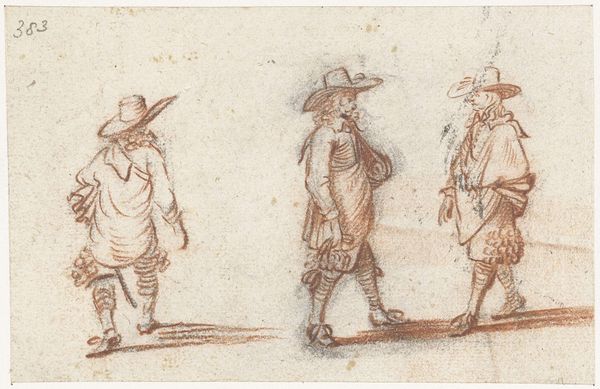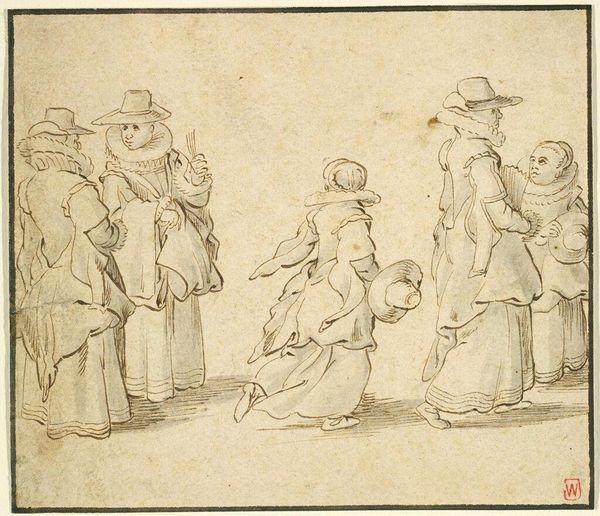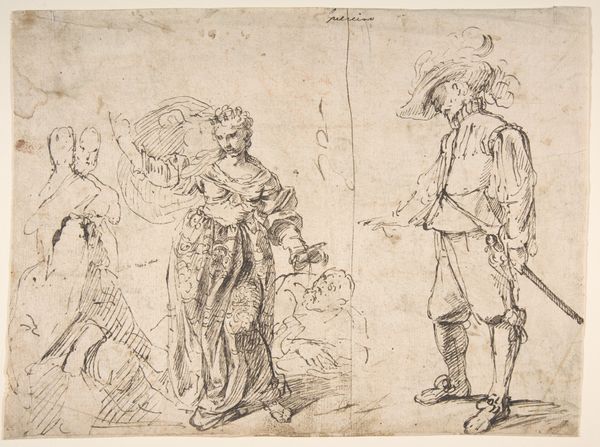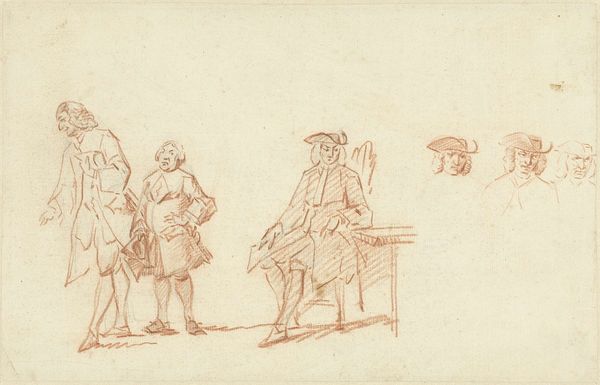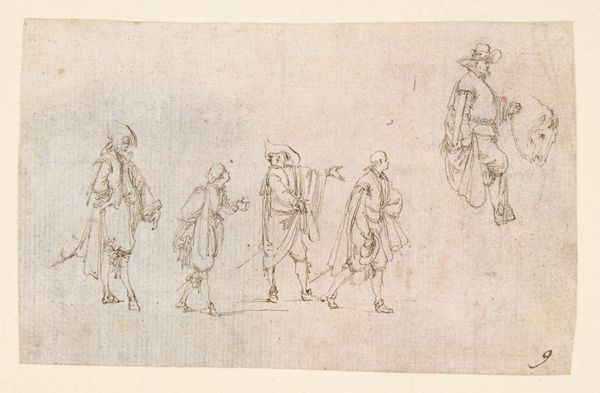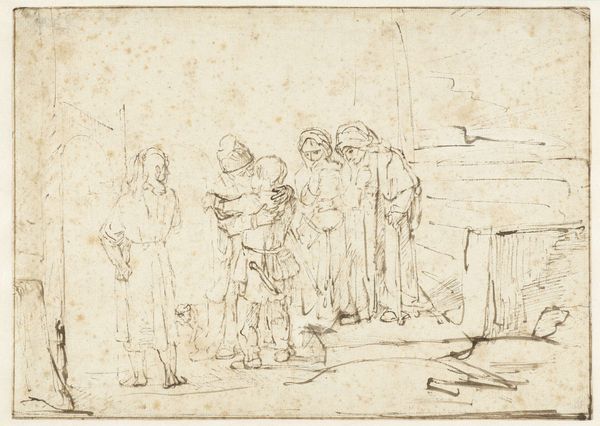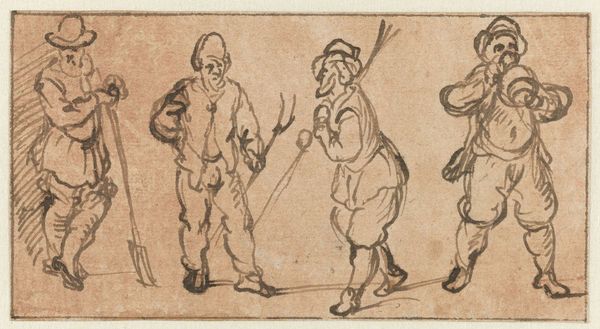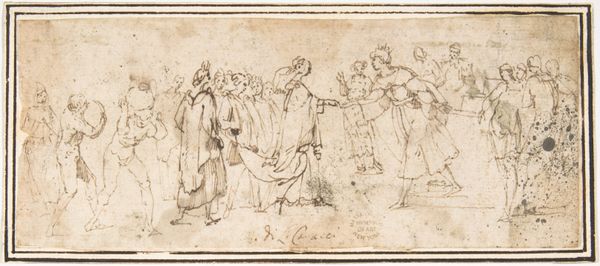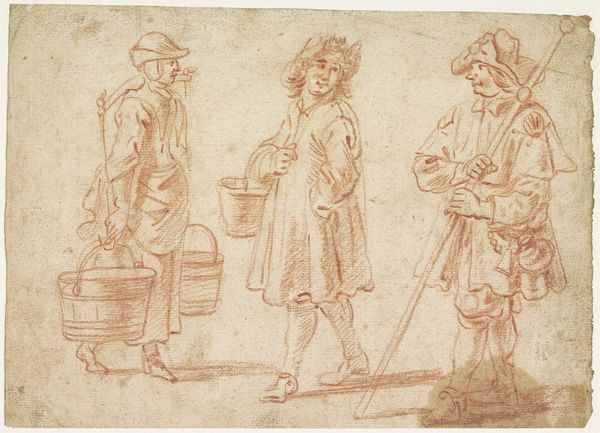
Vijf boeren en een doedelzakspeler uit een bruiloftsoptocht 1600 - 1610
0:00
0:00
adriaenbrouwer
Rijksmuseum
drawing, ink
#
drawing
#
dutch-golden-age
#
figuration
#
ink
#
genre-painting
Dimensions: height 200 mm, width 265 mm
Copyright: Rijks Museum: Open Domain
Editor: This is "Five Peasants and a Bagpiper from a Wedding Procession," a drawing in ink by Adriaen Brouwer, dating from around 1600 to 1610. I’m struck by the casualness of the figures. They seem caught mid-stride. What do you see in this piece? Curator: I see a depiction of a very specific societal segment often ignored or misrepresented in art history. Brouwer wasn't just depicting peasants; he was offering a commentary, however nuanced, on class and representation. Who gets to be seen, and how are they portrayed? Editor: So, it's more than just a scene of everyday life? Curator: Exactly. Think about the time. Dutch Golden Age painting often idealized its subjects, particularly wealthy merchants. Brouwer, however, focuses on those whose labor sustained that wealth, but who were often subject to ridicule and derision. Is he celebrating them, or reinforcing stereotypes? What do you notice about how they're dressed, or behaving? Editor: They seem... animated. But I can see how their clothes could be seen as rough, and one of them is even carrying another on his shoulders! Maybe that's why they were often laughed at? Curator: Precisely! And Brouwer, though gaining some recognition himself, came from relatively humble origins. Do you think his background influenced how he portrayed these subjects? Editor: It probably gave him a perspective that someone from a more privileged background wouldn't have. This isn't just a simple genre scene then; it reflects complex power dynamics of the time. Curator: Indeed. It asks us to question our own perspectives, biases, and the stories we tell ourselves about those different from us, which is why the historical context here is indispensable to truly understanding the work. Editor: That’s fascinating; it definitely changed how I see this drawing. It's a lot more charged than I initially thought. Thanks for your insights!
Comments
No comments
Be the first to comment and join the conversation on the ultimate creative platform.
